
Conventional Wisdom suggests that scanning backs cannot be used for photographing moving subjects because movement can distort such subjects during the time it takes to record them. However, once this time-dependent characteristic of scanning photography is understood, it can be used advantageously to create unique images not possible with other digital cameras. One form of intentional misuse involves subjects that move on their own while they are being scanned, such as the ocean photography described in our article Shooting the Waves. In these situations, the movement of the subject interacts with the movement of the image sensor to produce unusual renditions of familiar things. Another type of misuse involves placing objects on a rotating platform in front of the camera while the system is operated in rollout mode so the image sensor remains stationary. In these situations, the movement of the subject interacts with the sequential recording of the image to create fantastic virtual objects. all photos are Copyright by their respective photographers |
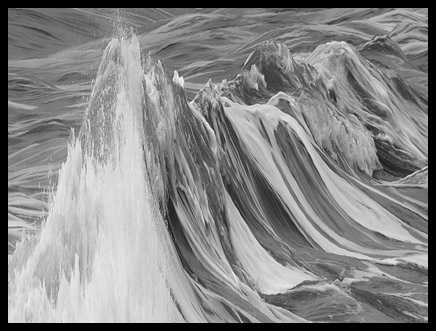 |
|
An example from Shooting the Waves |
Tom Watson Distorts Reality Photographer Tom Watson spent the entire morning figuring out the best way to capture these large wind generators with his Better Light system, experimenting with different scan speeds and directions to see how the rotating blades would be recorded. This idyllic scene from upstate New York takes on Dali-esque characteristics in Tom's meticulous rendition. The smooth progress of the image sensor combined with the rotating blades creates a graceful pattern that expresses the blade motion in a strong but unusual manner. |
||
 |
These are huge wind machines - the generator housing atop the column is the size of a two car garage. Below is a photo by Tom Watson showing the blade assembly being hoisted onto a new generator at dawn. The crane operator stopped raising the blades long enough for Tom to capture this high-resolution scan of the scene, showing what the blades look like at rest. | |
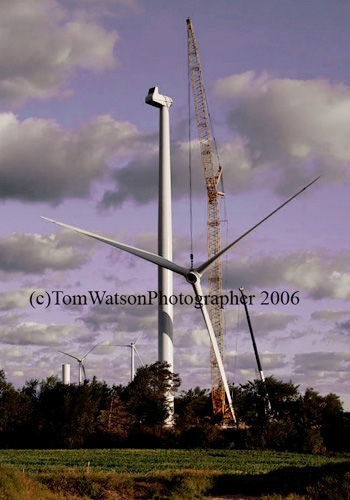 |
||
Christine Blackburne
Twists the Ordinary For these delightful images, photographer Christine Blackburne
arranged her subjects on a rotating platform that she could move
on command. A normal scan was started, and the subject remained
stationary until the image sensor was partway down the fruit. Then
the subject was smoothly rotated one-half turn while the sensor
continued moving down the fruit. The subject again remained stationary
for the last portion of each image. |
|||
 |
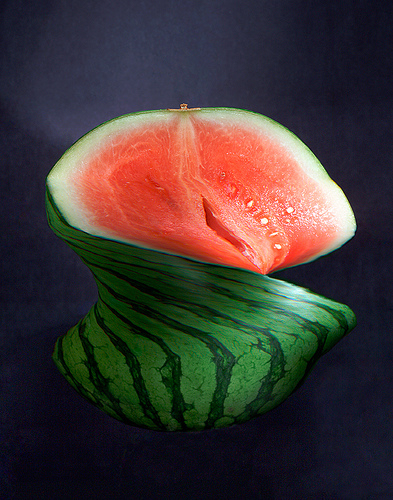 |
||
John Csongradi Rolls Out Nature Rollouts are photos created by putting the subject on a rotating platform that turns smoothly during the scan while the image sensor remains stationary behind the center of the lens. The sensor is oriented vertically, and as the subject rotates horizontally an image is captured line by line as the subject moves past the sensor. Photographer John Csongradi mounted a round platform to his Better Light Pano/WideView adapter and then positioned this assembly in front of his camera. This precision motorized turntable is controlled directly by the scanning back for perfectly synchronized captures at any exposure or resolution settings. Only the narrow slice of the subject directly in front of the camera needs to be illuminated, allowing for some interesting lighting possibilities. Here John shows us a complete 360 degree scan of a nautilus shell, and a seemingly endless row of aloe flowers. Those familiar with the shape of a nautilus shell might still have difficulty realizing that the two sides of this rollout show the outside of the shell, while the top center shows the inside of the same part of the shell viewed from the opposite direction. |
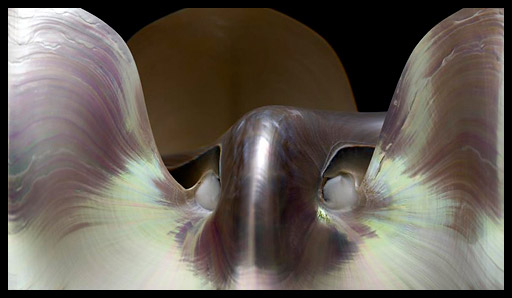 |
|
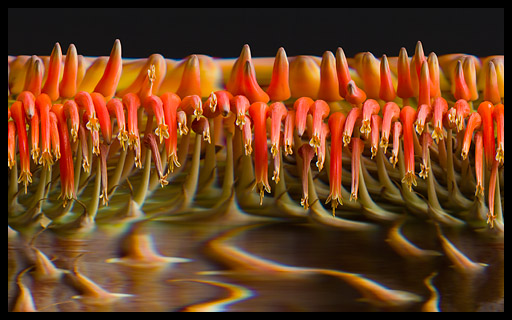 |
||
Alex Collette Spins
Out Fantasy A spinout is similar to
a rollout in that the
subject is placed on a rotating
platform in front of the camera, but for these unusual photos the
image sensor is oriented horizontally instead of vertically. Now
the system records a narrow horizontal stripe as the subject rotates
horizontally. By carefully adjusting the camera angle and elevation,
the boss's son Alex was able to create spectacular images from rather
ordinary subjects. From left to right, these photos were made from:
(1) a wood block and four photo A-clamps; (2) some colored paper
clips; (3) a small pile of rubber bands and some colored paper clips;
and (4) small polished rocks and minerals. |
|||
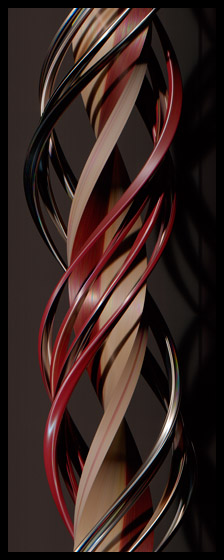 |
 |
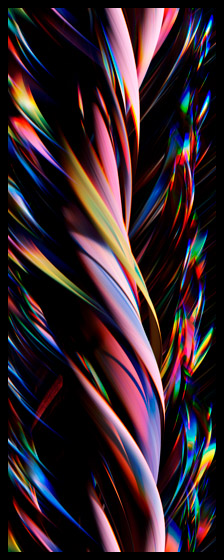 |
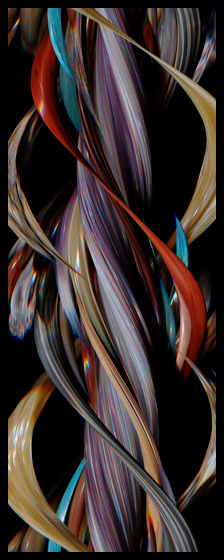 |
| Below are more spinout examples Alex made using common materials carefully arranged on the rotating platform. From left to right, these photos were made from (1) clear, colorless broken glass; (2) loose pieces of yarn; (3) full skeins of yarn; and (4) glass catseye marbles. The moving glass sprayed refracted light for an additional element of motion during its scan, while some of the marbles were allowed to roll within regions defined by black wire taped to the (tilted) turntable to add random jitter to that image. | |||
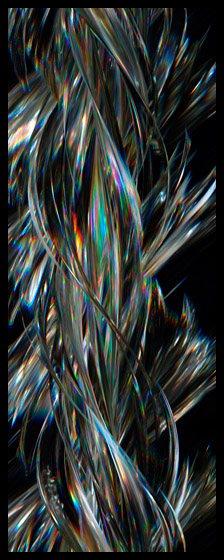 |
 |
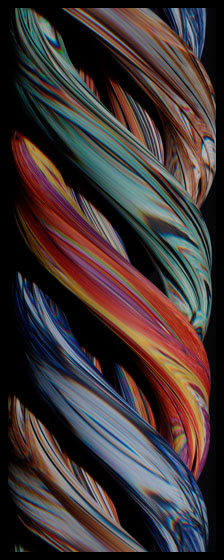 |
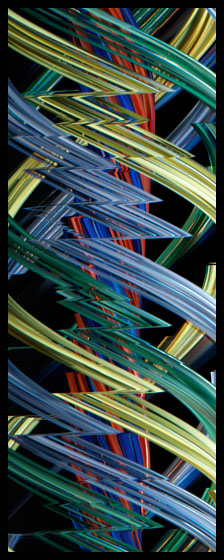 |